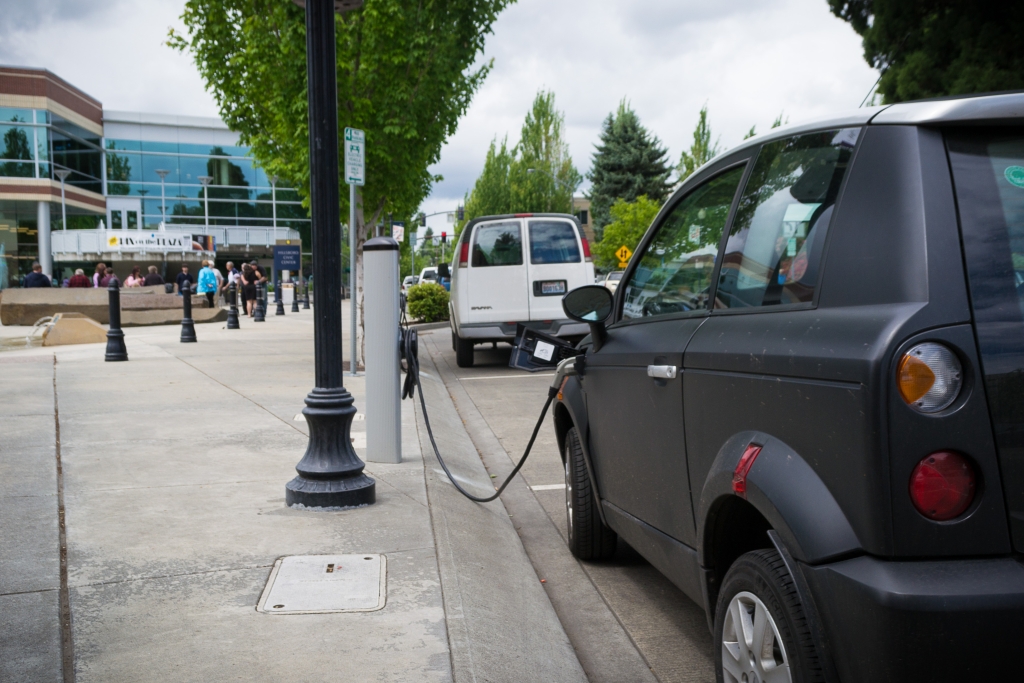
Clean Energy Canada is a clean energy think tank at the Morris J. Wosk Centre for Dialogue at Simon Fraser University. Through media briefs, we aim to provide useful factual and contextual information related to Canada’s clean energy transition. Please use this as a resource, and let us know if there are any topics that you would like to see for future media briefs.
The government of Canada is currently consulting on the proposed regulation to achieve its zero-emission vehicle regulated sales targets, also known in other jurisdictions as a “ZEV mandate”. The policy lays out the route to meeting 100% zero-emission vehicle sales Canada-wide in 2035. This media brief breaks down the design of the draft regulation and compares it to other jurisdictions internationally. It also summarizes how the measure will affect consumer choice, EV prices, and EV availability.
What are the proposed regulations?
- Starting from the 2026 model year, automakers must ensure that 20% of new passenger vehicles available for sale in Canada are zero-emission, increasing to 60% by 2030 and 100% by 2035. Battery electric (BEV), plug-in hybrid electric (PHEV), and fuel cell electric vehicles (FCEV) are all classed as “ZEVs” for the purposes of the regulation.
- The design of the proposed regulation is flexible, allowing automakers a number of pathways to meet sales requirements. It uses a credit trading system, where one credit is created when one battery or fuel-cell electric vehicle is made available for sale (partial credits are awarded for plug-in hybrids). An automaker can use that credit to meet their sales requirements, sell any surplus credits to other automakers, or bank them for compliance at a later time. Automakers can also buy credits from other automakers or borrow them from future compliance years to meet their sales requirements. They can also generate credits by investing in ZEV charging and refuelling infrastructure.
- If an automaker does not meet their requirements, they are subject to enforcement under the Canadian Environmental Protection Act. The act provides the authority to carry out inspections and investigations to ensure that the regulation is followed, and the ability to impose a variety of penalties from a warning to a criminal prosecution. However, this enforcement mechanism differs from leading jurisdictions with similar regulations. These jurisdictions use administrative penalty regimes with predictable financial penalties of $20,000 fine per credit deficit. This type of financial penalty is transparent, enforceable, and certain, and has proven to be a successful incentive for compliance. While a Canadian Environmental Protection Act prosecution is a serious matter, it is not certain or timely, as charges often take months to years to resolve. It is ultimately unlikely a prosecution would be undertaken against automakers falling short of their requirements by a few credits.
ZEV mandates in other jurisdictions
- Quebec, B.C., and California all use a similar system to achieve their sales requirements en route to 100% new ZEV sales by 2035. However, unlike the draft federal design, these requirements are enforced using predictable financial penalties (as described above).
- Since California enacted its ZEV mandate in 1990, 15 other U.S. states have followed suit.
- A number of other countries also have a ZEV mandate in place, including China, which has requirements that 40% of new vehicle sales are “new energy vehicles,” (which also comprises BEVs, PHEVs, and FCEVs) by 2030.
- In addition, there are other regulations in place globally that, while not technically ZEV mandates, could lead to similar outcomes:
- The U.S. has recently proposed a new, more ambitious average fleet emissions standard, which requires that automaker fleets adhere to increasingly strict tailpipe emissions requirements. As the rules become more stringent over time, automakers will be forced to sell a greater share of zero-emission vehicles. Once the new emission standards are in force, the U.S. Environmental Protection Agency projects that this would be equivalent to 36% battery-electric sales (not including sales of plug-in hybrids) in 2027, 60% in 2030, and 67% in 2032 (when the regulations end).
- The EU is also using strict tailpipe emission regulations, rather than sales requirements, to phase out gas and diesel cars by 2035. A proposal allowing the continued sale of vehicles with an internal combustion engine running exclusively on synthetic fuels beyond 2035 is anticipated later this year, although both analysts and automakers expect EVs to dominate the market. Indeed, three quarters of all automakers operating in Europe have announced their intention to sell 100% battery electric vehicles by 2035.
Impact on ZEV sales and supply
- In Canada, the provinces with the most ZEV availability are the ones with regulated ZEV sales targets. A study commissioned by Transport Canada found that 82% of dealerships didn’t have any ZEVs (BEVs and PHEVs) in stock in March 2022—and those with stock were concentrated in B.C. and Quebec.
What are the impacts on consumers?
- A recent analysis by Environmental Defence found that Canadian regulated ZEV sales targets to phase out gas and diesel cars by 2035 would cut ZEV prices by 20% as automakers are forced to sell more affordable models, instead of just luxury ZEVs, to meet the requirements.
- EV costs will continue to go down as automakers compete for consumers—an effect that would be accelerated by a ZEV mandate. Earlier this year, Tesla announced global price cuts across all models, including in Canada. Ford’s Mach-E followed suit, while one of the world’s largest EV battery producers, CATL, is offering battery price cuts to key customers. In terms of more affordable models, Volkswagen intends to create its first €20,000 EV in Europe by 2027, and in the U.S., the Chevrolet Bolt will become the first EV to hit less than US$30,000 of total ownership cost over five years (including purchase, charging, and maintenance), thanks in part to incentives provided by the Inflation Reduction Act.
- Last year, Clean Energy Canada analyzed a number of popular electric car models, comparing their total ownership costs with that of gas equivalents. With just one exception (the F-150 Lightning pick up truck), the electric version of every car analyzed was cheaper, usually significantly so. Specifically, the analysis found that the electric Hyundai Kona, Canada’s second best-selling EV in 2021 (after the Tesla Model 3), is $17,800 cheaper to own than the gas-powered Kona with an average gas price of $2. Even at a gas price of $1.45, the Kona is still $10,500 cheaper. The electric Chevrolet Bolt offered even more cost savings, with the comparable gas-powered Toyota Corolla costing $22,000 more over its lifetime at a $2 gas price.
- Almost six in ten (59%) Canadians correctly believe that an electric vehicle will end up being cheaper for them over a gas vehicle, according to a Clean Energy Canada poll in December 2022. In addition, 72% of Canadians believe that it is certain, very likely, or likely that a majority of consumer vehicles sold around the world will be electric.
- A B.C.-based survey from March 2023 found that 96% of current EV drivers say their vehicle is more affordable. What’s more, the same percentage would buy another EV when the time comes (Albertan EV drivers concurred in a separate survey).


